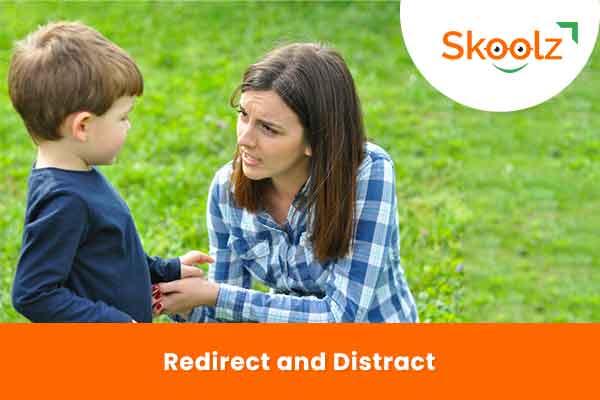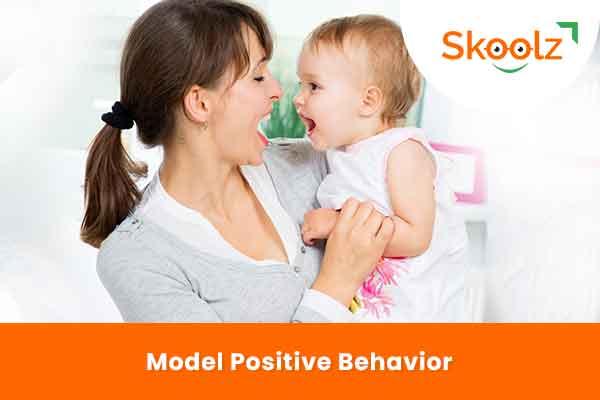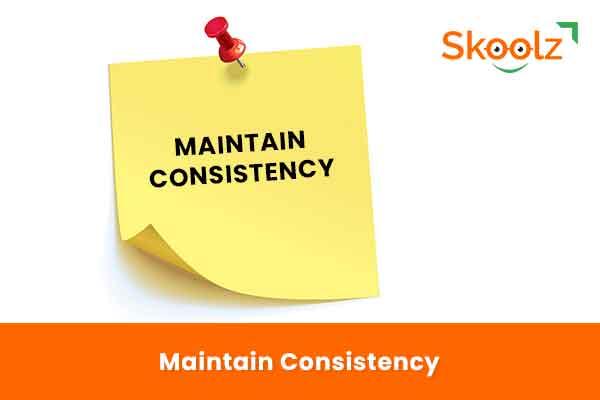
Positive Discipline Strategies for Parenting Toddlers: Nurturing with Love and Boundaries
Positive Discipline Strategies for Parenting Toddlers: Nurturing with Love and Boundaries
Parenting toddlers can be a delightful yet challenging journey. As your child explores their newfound independence, it's crucial to establish effective discipline strategies that promote positive behavior and help them develop essential life skills. In this blog, we will explore positive discipline techniques for parenting toddlers, emphasizing the importance of love, patience, and setting age-appropriate boundaries. However, it's important to remember that every child is unique, and it may take time to find the strategies that work best for your family.
Understanding Positive Discipline:
Positive discipline is an approach to parenting that focuses on teaching and guiding children through respect, understanding, and consistent boundaries. It emphasizes nurturing the parent-child relationship while fostering self-discipline, empathy, and problem-solving skills in children. By adopting positive discipline strategies, parents can create a loving and supportive environment that encourages cooperation and healthy emotional development.
Positive Discipline Strategies for Parenting Toddlers:
1. Set Clear Expectations:

Communicate your expectations to your toddler using simple, age-appropriate language. Clearly explain what behaviors are acceptable and why certain boundaries are in place.
2. Use Positive Reinforcement:

Praise and acknowledge your child's positive behavior and efforts. Celebrate their achievements, no matter how small, to build their self-confidence and reinforce desired actions.
3. Redirect and Distract:

When your child engages in unwanted behavior, redirect their attention to a more appropriate activity or offer a distraction to help them shift their focus.
4. Time-In:

Instead of using time-outs, consider implementing time-ins. When your child misbehaves, take a moment to sit calmly with them, providing comfort and guidance. Use this opportunity to discuss their feelings and offer gentle correction.
5. Offer Choices:

Encourage your toddler's independence by providing them with age-appropriate choices. This empowers them while giving them a sense of control within appropriate boundaries.
6. Model Positive Behavior:

Be a role model for your child by demonstrating the behaviors and values you wish to instill. Children learn through observation, so display kindness, respect, and empathy in your interactions.
7. Maintain Consistency:

Consistency is key in positive discipline. Ensure that boundaries and consequences remain consistent, helping your child understand what is expected of them and providing a sense of security.
FAQs:
Q1. What if my toddler throws a tantrum in public?
A: Stay calm and empathetic. Offer comfort and understanding while gently redirecting their attention or removing them from the situation if necessary.
Q2. How do I handle hitting or biting behavior?
A: React calmly but firmly. Use simple language to explain that hitting or biting is not acceptable and provide alternative ways to express emotions, such as using words or gentle touches.
Q3. Is it normal for toddlers to test boundaries?
A: Yes, testing boundaries is a natural part of your child's development. Stay patient, reinforce consistent expectations, and provide positive guidance.
Disclaimer:
The information provided in this blog is intended for general guidance and educational purposes only. It is not a substitute for professional advice or personalized parenting strategies. Each child is unique, and it is essential to adapt discipline techniques to suit individual needs. Consult with a qualified professional or pediatrician for specific concerns or guidance related to your child's behavior or development.
Conclusion:
Positive discipline strategies provide a nurturing framework for parenting toddlers, fostering their emotional well-being, self-discipline, and healthy growth. By setting clear expectations, offering choices, and modeling positive behavior, parents can guide their children with love and empathy. Remember, each child's journey is unique, so embrace patience and flexibility as you navigate the joys and challenges of parenting.
References:
American Academy of Pediatrics. (2018). Positive Parenting & COVID-19: 10 Tips to Help Keep the Calm at Home. Retrieved from https://www.healthychildren.org/English/healthy-living/emotional-wellness/Building-Resilience/Pages/Positive-Parenting-and-COVID-19_10-Tips.aspx
Siegel, D. J., & Bryson, T. P. (2014). No-Drama Discipline: The Whole-Brain Way to Calm the Chaos and Nurture Your Child's Developing Mind. Bantam.

Swati Sahu
Digital Marketer

Positive Discipline Strategies for Parenting Toddlers: Nurturing with Love and Boundaries
Parenting toddlers can be a delightful yet challenging journey. As your child explores their newfound independence, it's crucial to establish effective discipline strategies that promote positive behavior and help them develop essential life skills. In this blog, we will explore positive discipline techniques for parenting toddlers, emphasizing the importance of love, patience, and setting age-appropriate boundaries. However, it's important to remember that every child is unique, and it may take time to find the strategies that work best for your family.
Understanding Positive Discipline:
Positive discipline is an approach to parenting that focuses on teaching and guiding children through respect, understanding, and consistent boundaries. It emphasizes nurturing the parent-child relationship while fostering self-discipline, empathy, and problem-solving skills in children. By adopting positive discipline strategies, parents can create a loving and supportive environment that encourages cooperation and healthy emotional development.
Positive Discipline Strategies for Parenting Toddlers:
1. Set Clear Expectations:

Communicate your expectations to your toddler using simple, age-appropriate language. Clearly explain what behaviors are acceptable and why certain boundaries are in place.
2. Use Positive Reinforcement:

Praise and acknowledge your child's positive behavior and efforts. Celebrate their achievements, no matter how small, to build their self-confidence and reinforce desired actions.
3. Redirect and Distract:

When your child engages in unwanted behavior, redirect their attention to a more appropriate activity or offer a distraction to help them shift their focus.
4. Time-In:

Instead of using time-outs, consider implementing time-ins. When your child misbehaves, take a moment to sit calmly with them, providing comfort and guidance. Use this opportunity to discuss their feelings and offer gentle correction.
5. Offer Choices:

Encourage your toddler's independence by providing them with age-appropriate choices. This empowers them while giving them a sense of control within appropriate boundaries.
6. Model Positive Behavior:

Be a role model for your child by demonstrating the behaviors and values you wish to instill. Children learn through observation, so display kindness, respect, and empathy in your interactions.
7. Maintain Consistency:

Consistency is key in positive discipline. Ensure that boundaries and consequences remain consistent, helping your child understand what is expected of them and providing a sense of security.
FAQs:
Q1. What if my toddler throws a tantrum in public?
A: Stay calm and empathetic. Offer comfort and understanding while gently redirecting their attention or removing them from the situation if necessary.
Q2. How do I handle hitting or biting behavior?
A: React calmly but firmly. Use simple language to explain that hitting or biting is not acceptable and provide alternative ways to express emotions, such as using words or gentle touches.
Q3. Is it normal for toddlers to test boundaries?
A: Yes, testing boundaries is a natural part of your child's development. Stay patient, reinforce consistent expectations, and provide positive guidance.
Disclaimer:
The information provided in this blog is intended for general guidance and educational purposes only. It is not a substitute for professional advice or personalized parenting strategies. Each child is unique, and it is essential to adapt discipline techniques to suit individual needs. Consult with a qualified professional or pediatrician for specific concerns or guidance related to your child's behavior or development.
Conclusion:
Positive discipline strategies provide a nurturing framework for parenting toddlers, fostering their emotional well-being, self-discipline, and healthy growth. By setting clear expectations, offering choices, and modeling positive behavior, parents can guide their children with love and empathy. Remember, each child's journey is unique, so embrace patience and flexibility as you navigate the joys and challenges of parenting.
References:
American Academy of Pediatrics. (2018). Positive Parenting & COVID-19: 10 Tips to Help Keep the Calm at Home. Retrieved from https://www.healthychildren.org/English/healthy-living/emotional-wellness/Building-Resilience/Pages/Positive-Parenting-and-COVID-19_10-Tips.aspx
Siegel, D. J., & Bryson, T. P. (2014). No-Drama Discipline: The Whole-Brain Way to Calm the Chaos and Nurture Your Child's Developing Mind. Bantam.

Swati Sahu
Digital Marketer




